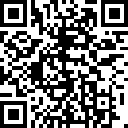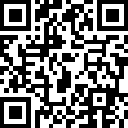Ultima Markets
You are visiting the website that is operated by Ultima Markets Ltd, a licensed investment firm by the Financial Services Commission “FSC” of Mauritius, under license number GB 23201593. Please be advised that Ultima Markets Ltd does not have legal entities in the European Union.
If you wish to open an account in an EU investment firm and protected by EU laws, you will be redirected to Ultima Markets Cyprus Ltd (the “CIF”), a Cyprus investment firm duly licensed and regulated by the Cyprus Securities and Exchange Commission with license number 426/23.
Introduction to Technical Analysis in Forex Trading
16 August 2023

Technical analysis in forex trading is like solving a puzzle using historical price data. It helps us understand the past and make predictions about the future.
What is Technical Analysis?
By studying these puzzle pieces—patterns, trends, support and resistance, and using indicators—we can make predictions about future price movements. But remember, technical analysis is not foolproof. It’s like a game of probabilities, where we use historical clues to make educated guesses about what might happen next. It’s important to combine technical analysis with other forms of analysis, like understanding economic news and managing risks.
By learning technical analysis, people can develop a better understanding of how prices move in the forex market and use this knowledge to make more informed trading decisions. It’s like being a detective, solving puzzles and making predictions based on the clues we find in the charts. Just like any skill, practice and continuous learning are key to becoming better at technical analysis.
Key Components of Technical Analysis
As we mentioned above, traders rely on various clues from the past to predict the future. And here are some key clues frequently used to make predictions:
- Price charts:
Price charts show the historical prices of a currency pair, like a line graph or candlestick chart. These charts display the ups and downs in currency prices over time.
- Patterns and trends:
Traders look for patterns and trends in the price charts. They observe how prices have moved in the past to identify similar patterns that might happen in the future. For example, they might notice that every time the price goes up a certain amount, it tends to come back down, or vice versa. These patterns are used to predict when the price might go up or down next.
- Indicators:
Traders use indicators, which are special calculations based on price data, to obtain more market information. For example, they might use moving averages, which show the average price over a certain period, to identify trends. They can also use oscillators, which help determine if a currency is overbought or oversold.
Summary
- Traders can make predictions about future price movements by relying on technical analysis.
- Technical analysis consists of many key components, such as price charts, patterns and trends, and indicators.














